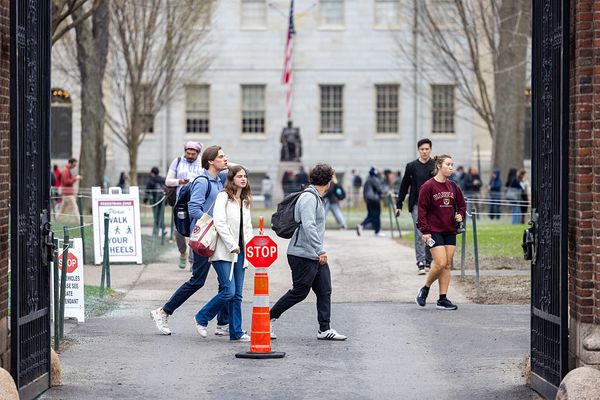
Thankfully, the mooted Valentines' Day special livery that enrobed the Williams FW47 was none too garish, once the car was revealed during its Silverstone shakedown on Friday. The dark blue screenfade effect was actually quite cool, almost like a gateway into a badly damaged '90s CRT screen - with the lingering screen burn of a time when Williams was at the zenith of Formula 1. It has no secrets about its lofty ambitions to return there.
The good ship HMS Williams is picking up steam. James Vowles, now at the helm for a third year, has picked up a highly-rated new crewman and a new title sponsor - its first since ROKiT was involved with the team during its turn-of-the-decade nadir. But the team has been increasingly keen to point out that its focus on the FW47 is, in effect, a brief layover - success under the 2026 regulations is the current destination.
That's not to say that Williams' engineers, under the leadership of Pat Fry, phoned it in - the team still wants to be competitive, after all. However, there's clear evolutionary steps from the FW46, a car that grew in stature through the season but one that was also prone to being hurled off the road.
One would expect the brief to have been to reduce that instability, one that seemed to affect the rear end in medium-speed corners or in low-grip conditions. The usual parameters also apply: add downforce, reduce drag, make it nice to drive...
Unlike the McLaren launch, Williams' car showed an entirely new front wing assembly, complete with new nose and revised positioning of elements to follow a somewhat contemporary chain of development in this area. By comparison, the FW46 had a broad, flat nose design that appeared to be influenced by Fry's time at Alpine; the FW47 has a more svelte approach by presumably narrowing down the crash structure. The wing also has its outboard mountings positioned further forward, achieved by reducing the chord length here to leave a corner of the endplate exposed.
This might seem like a standard development to improve how the aerodynamicists employ exposed edges to induce vorticity, but - and stick with me here - it underlines the infrastructural improvements Williams has been implementing back at base. One of the areas that Vowles was keen to improve upon his arrival was in the composites department, knowing that improving the processes and the machinery at Grove could not only allow the team to produce lighter parts, but also retain structural integrity with smaller pieces of the F1 car jigsaw puzzle. It might be more difficult to pass the FIA's crash tests with a smaller, thinner nose, but if the engineers have the tools to be more efficient with composite lay-up, then this imbues greater strength in the process. Essentially, the team has more latitude to opt for a 'riskier' design.

Williams has retained the status quo with its front suspension and retained push-rod-activated rockers. This largely remains a matter of personal preference among the designers and aerodynamicists; evidently, Williams does not feel that it is worth throwing the baby out with the bathwater. Like last year's car, Williams has been able to stack the push-rod's upper mounting behind the first wishbone leg, essentially setting up the airflow with the front-most suspension fairing and laying it down with the curvature of the second.
This leads into the tub area which, on the FW46, had a noticeable trapezoidal front section - should anyone look at a photo of last year's car, then they might notice where the bulkhead flares out below the Stephens logo. The new car no longer appears to have this on first viewing, again perhaps an indication of the team's improvements with augmenting its chassis structurally. One distinct benefit of this is that it opens out the space underneath the inlet, one that appears to have been largely carried over - if not, simply influenced by - the RB20-style intakes that the team introduced in Zandvoort last year.
Here, the side impact crash structure is mounted high up, and airflow either split over the top to be channelled downwards or shoved through the heavy undercut around the edge of the floor. One can surmise that the channelling towards the rear end of the sidepods' top face remains, giving clearer direction to the airflow being fired at the floor's upper surface. This flows around a new engine cover, which appears to be more shapely compared to that of its FW46 forebear. The bulges and blisters previously evident here are less obvious, hinting at more effective packaging of the powertrain and ancillary internals that the aerodynamicists are especially keen to influence.
The team is hoping that the FW47 can cure the ills of last year's car and bring about some kind of ascent up the order but, equally, it won't lose too much sleep if it can't manage to do so
The rear wing will be interchangeable through the year, although the FW47 was shown with a higher-downforce specification wing that displays a flatter mainplane and exposed tips on the upper element. Williams used variations of this design last year, but there are nonetheless a few iterative tweaks to the formula.
One of the bigger changes sits at the rear, as the team has shifted to a push-rod rear suspension layout. It has moved the front leg of the upper wishbone downwards to occupy some of the space left where the pull-rod used to enter the bodywork, spacing out the suspension members to clean up the airflow in this area. This is a change that many have opted for to move the springs and rockers away from the underside of the car, meaning that diffuser space is enlarged. There are knock-on changes to the overall load characteristics that the vehicle dynamicists must get their heads around, but ultimately it should yield a net aerodynamic gain. This is now in line with the team's technical tie-up with Mercedes, where it used the previous year's suspension package in 2024 to retain the pull-rod rear assembly.
Other areas, for example the visible parts of the floor, are in much the same condition as where the FW46 left off at Abu Dhabi last year. Williams may yet see fit to subject this to further development, although pumping further time and money that could be earmarked for 2026 may be viewed as a risk - especially given the hit-and-miss floor developments that its rival teams encountered over last season.

And 2026 hangs, like the Sword of Damocles, over Williams' head. The new regulations are the team's priority, and every decision it makes for 2025 will come with the added caveat of "how will this affect next year's build?". Of course, that's the same for every team on the grid - but Vowles' frequent assertions that this year is subject to being sacrificed for next year will mean that it won't attain much of a development trajectory.
The team is hoping that the FW47 can cure the ills of last year's car and bring about some kind of ascent up the order but, equally, it won't lose too much sleep if it can't manage to do so. Everything looks to be the result of the iterative improvements back at base, giving it more developmental latitude - so if anything, the car should indicate that the team is on the right track. How much it falls back over the year, assuming minimal development, will be intertwined with the approaches of the other outfits on the grid.








